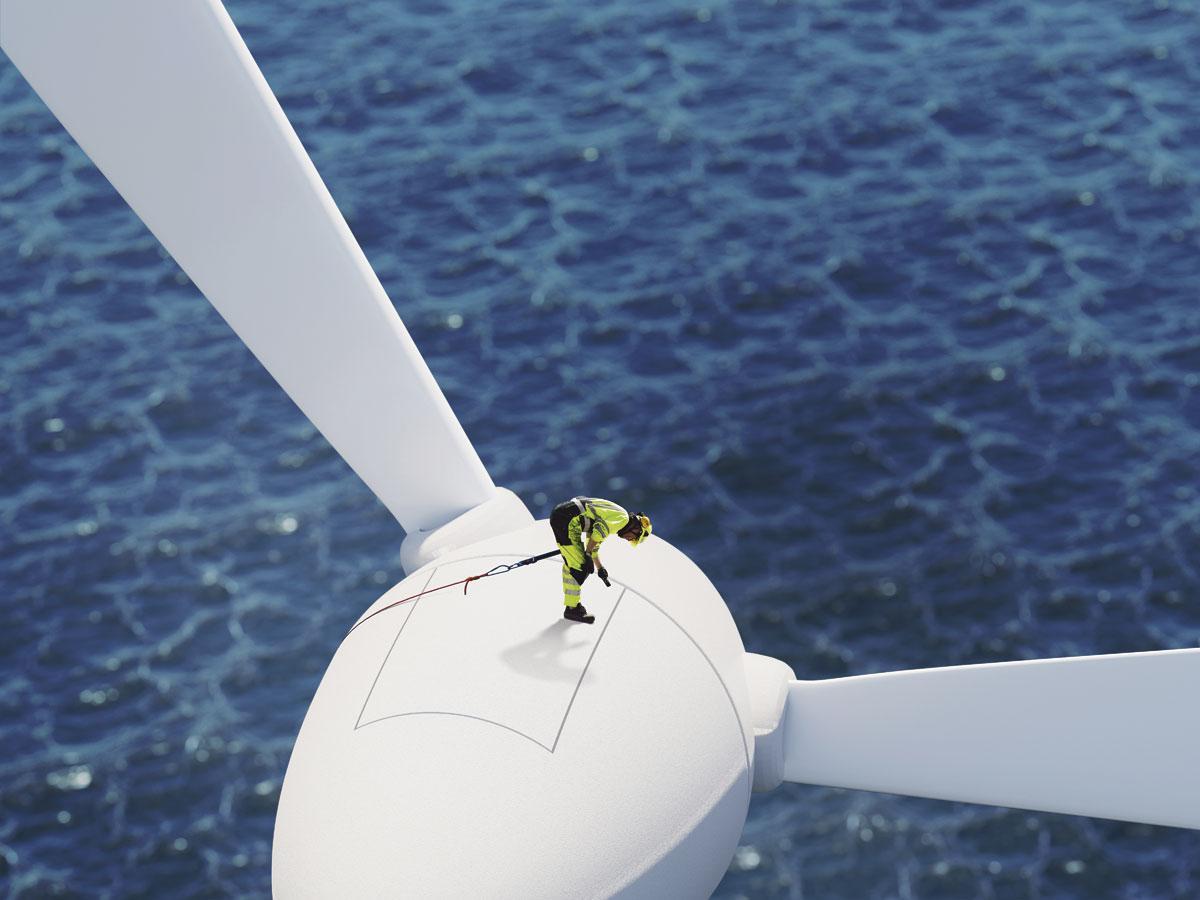As usual, Americans see it big. The US wants to have 30 gigawatts of offshore wind power by 2030. These lofty ambitions can only be achieved with the expertise of European and particularly Flemish companies.
In 2020, the United States left the Paris climate accords, but now Americans are demanding a leading role in international offshore wind markets with greater fanfare and ambition. Although the US only has its toes in the water today, the country wants to build 30 gigawatts of offshore capacity by 2030, enough to power 10 million homes. The windy Atlantic coast is the ideal location, and later wind farms are planned along the Gulf of Mexico and along the West Coast. By comparison, this represents 2.2 GW of turbines on the Belgian coast, with plans to expand to 5.8 GW by 2030.
America wants 30 gigawatts by 2030? No way. European plans are also unrealistic’, Karl Heiremans, John de Null
“President Joe Biden’s climate policy marked a turning point last year. Government agencies are urged to approve projects quickly,” says Ralph Moreau, US representative of Flanders Investment and Trade, who organized a mission to the US at the end of March. Observers expect the Inflation Act, which will release $369 billion in tax incentives for renewable energy investment projects, to provide an additional boost to the market. A changing of the guard in the White House in 2024 will not be a breaking point under any circumstances. The US has already sent many resources offshore. “The horse is out of the stable,” said Lee Connor, Belgium’s honorary ambassador to the Baltimore area.
For President Biden, offshore wind energy is not only a key pillar of his tough climate policy. Also fits into the industrial policy of the new sector Rest calls A rejuvenation treatment and will attract manufacturing chains from China, a major competitor. “The offshore industry is the new automotive industry that can employ a generation of workers. Biden’s Infrastructure Act provides a lot of money for US ports and other infrastructure,” said Jeff Tingley, a partner at consulting firm OSWindPartners.
“It was frustrating for the states that it took so long to draw the renewable energy card at the federal level. The plans collided with bureaucracy and difficult licensing policies. Now the states are waking up. They hope to attract jobs by expanding local supply chains or revitalizing their shipyards,” says Ralph. More.
Suppliers can barely keep up
Steeper American ambition, combined with a stronger industrial policy, worries the EU, which in turn responds with more aggressive industrial policy to protect European supply chains. “But the cake is big enough. “The challenge is to coordinate the scale of supply chains in the US and Europe,” say European diplomats. Whether it is installation vessels, steel, cables, cranes, transport or components, global demand often exceeds supply. The industry suffers from a chronic shortage of skilled workers. “We need to train 80,000 workers in America,” says Jeff Dingley.
Also, a resurgent oil and gas sector is once again competing for scarce resources. “We have incredible bottlenecks. Who will build everything? American and European ambitions cannot be met. It will take 10 to 15 years to build the supply chain,” says Peter-John Provost, an energy expert at the employers’ association Agoria.
Due to scarcity in the market, not only the US but also Europe has little chance of implementing the recently announced plans. “Does America Need 30 GW by 2030? No way. European plans are also unrealistic. The entire European maritime sector is expected to grow by 20 percent per year. No industry can do that. It’s not about the software, it’s about a heavy industry with huge investment costs and construction times,” says Carl Heiremans, Business Development Manager at John D.
This may also have consequences for Belgian and European projects. Those who don’t book in time run the risk of being late. Most countries have invested very little in their supply chains. “If you start a project now, it will soon be completed by the end of this decade,” the developers warn.
“Slow tendering of new projects creates increasing uncertainty. The entire supply chain grinds to a halt if an offer is not awarded. Remember, this is an industry built on high investment. If the risk is too high, the development of the supply chain will be delayed. If the government gives the go-ahead quickly, the engine will run,” says Peter-John. Provost. Too much bureaucracy and a slow permitting process are delaying the development of offshore wind energy in Europe. “Is Europe working on faster procedures? We’d love to hear it, but haven’t seen any improvements yet. Europe is planning 90 gigawatts of offshore wind power, but you can’t build it yet. The risk is even higher for larger investments,” says Eric Fine, business development manager at Smulders.
By expediting permits, for example, they could achieve American aspirations if they were allowed to do so.
Logically growing pains
The US target of 30 gigawatts by 2030 is particularly ambitious. The permitting process continues to slow, developers are paying more for concessions, and recent cost inflation and rising capital costs challenge the profitability of new wind farms.
For example, Danish developer Orstedt is ripping his pants off Sunrise Wind, a 924-megawatt wind farm off the coast of New York state. The Danes face an additional $365 million in costs. Project developer Avengrid, majority-owned by Spanish energy giant Iberdrola, has postponed development of a wind farm off the coast of Massachusetts by a year. The electricity prices set by Avengrid in long-term contracts with customers are insufficient to cover the increased costs. However, the regulator will not allow Avengrid to tear up those contracts. The regulator’s rationale is that “consumers should not pay higher prices if economic conditions change.” You can protest in court.
“The growing pains of the U.S. maritime industry are natural,” says John Claussen, director of DEME’s U.S. division. “It will take 25 years to install 30 gigawatts in Europe. The U.S. needs European expertise now to accelerate that practice. U.S. ambitions are attainable if they let us by expediting permits sufficiently.
“The U.S. has momentum, but it’s important to have steel in the water for the next 12 months. The industry needs to see the potential of offshore wind energy in U.S. waters,” says Eric Fine. Observers expect the sector to boom once the first wind farm becomes operational. “And then it’s going to increase. The U.S. is going to build a huge offshore wind industry,” says Jeff Dingley.
read more:

“Passionate analyst. Thinker. Devoted twitter evangelist. Wannabe music specialist.”







More Stories
Cooperation between the US and China ensures more stable corporate finance – FM.nl
New US peace proposal for Gaza war ‘may be too smart for either side to say no’
Bitcoin weathers bankruptcy storm in US